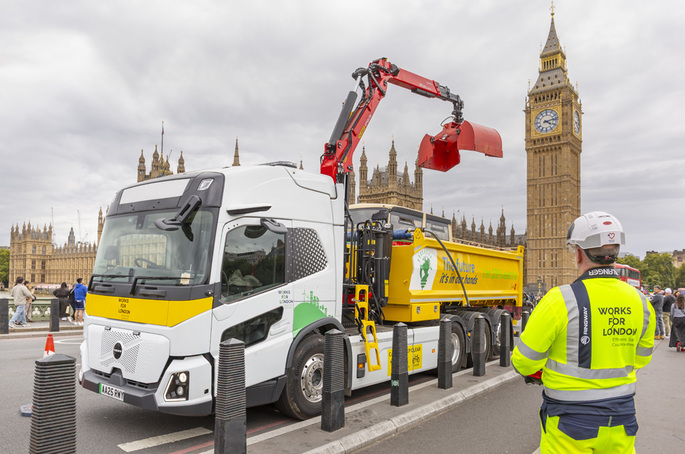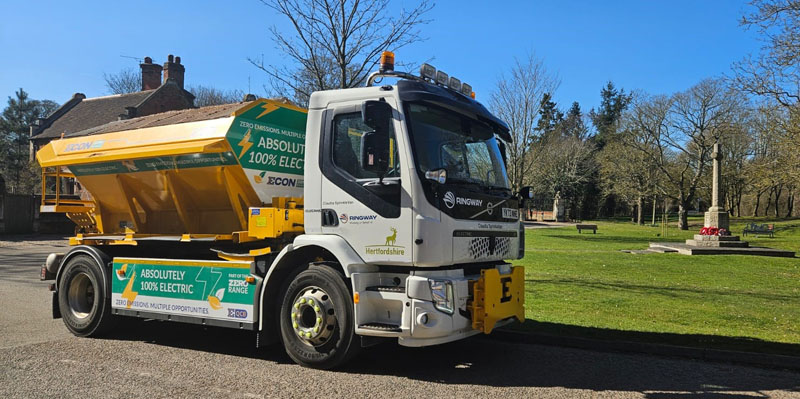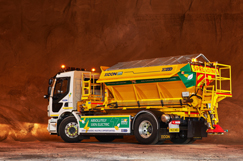Ringway has become one of the first UK companies to incorporate the latest Volvo electric trucks into its London fleet.
Purpose-built for city operations, two FM Low Entry vehicles have been provided to the specialist highway service provider and have each been adapted to serve a specific role.
One, the Volvo 32T FM Low Entry 8x2 Tridem, has full air suspension and a Thompsons tipper-grab bodywork, and is intended to undertake highways maintenance to support Transport for London's (TFL's) maintenance operations.
The other is a 4x2 18T featuring a Thompsons dropside body and a Palfinger crane mounted at the front of the truck bed. It will join the other truck on the TfL contract, taking on street lighting operations across the city by lifting columns into position and removing them.
Mitesh Solanki, Ringway managing director, said: ‘Given our focus on safety, innovation and climate adaptation, the FM Low Entry met all our expectations. Initially we've chosen two very different applications for these new models, and we'll be putting both vehicles through their paces to help us better understand future fleet configurations.
‘Ringway has already built a wealth of experience with the 26T Volvo FE Electric we introduced last summer; that truck has been performing well. However, with the FM Low Entry we benefit from Volvo's newest model and a chassis which can tackle heavier-duty applications. We believe this is a first for the highways sector, for Volvo and London.'
Solanki adds: ‘There's a perception that every truck travels hundreds of miles per day, but even over a full shift, the diesel trucks these replace were only covering, on average, around 50 miles. This makes them ideal applications for switching to electric. What's more, the simulation data shows us that, even in the middle of winter, and with the crane operating at every drop, the range will only have dipped just below 50 per cent by the time they return to the yard.'
Each vehicle is equipped with four traction batteries that provide a total capacity of 360 kWh. A detailed simulation confirmed that this would remain fit for purpose even after seven years of service, including operation in winter temperatures. The analysis also accounted for the energy demands of auxiliary systems such as the crane, body, and beacons.

























